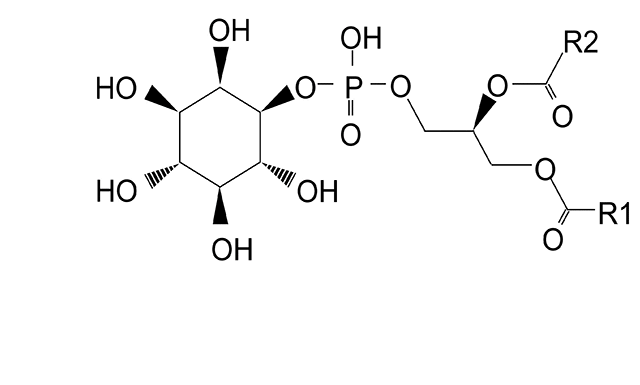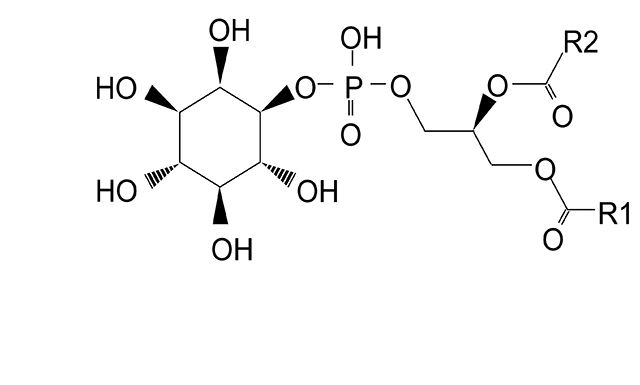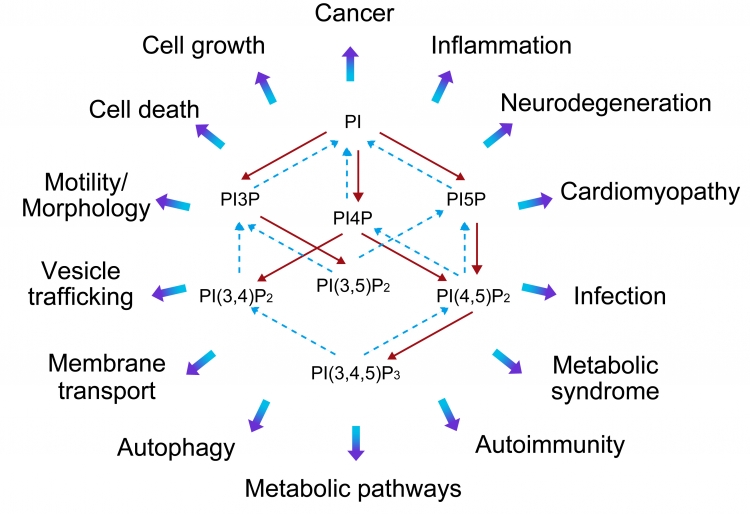Research
Our laboratory aims to understand the molecular mechanisms and physiological significance of intracellular signalling networks which involve phosphoinositide metabolism.
Cell membranes contain the lipid phosphatidylinositol, which can be phosphorylated on several of the hydroxyl residues of its inositol ring to give rise to seven other phosphoinositide classes . Recent examinations of a variety of phosphoinositide-binding proteins have renewed interest in the functions of phosphoinositides as direct regulators of diverse cellular processes. To date, the list of molecules that can bind to phosphoinositides includes protein kinases, phospholipases, ion channel proteins, scaffold proteins, cytoskeletal proteins, regulators of membrane trafficking and autophagy. Specific phosphoinositides are produced and degraded in one or more well-defined membrane compartments, helping to confine or release a relevant phosphoinositide-binding molecule at the appropriate site for its action. In view of the pleiotropic cellular processes controlled by phosphoinositides, and the distinct molecules targeted by each, the interconversion of phosphoinositides must be spatio-temporally organized in a context-dependent manner.
Combinatorial Phosphorylation of Phosphatidylinositol


In mammals, the 18 interconversion reactions involving all 8 phosphoinositide classes are mediated by as many as 49 genes encoding 20 phosphoinositide kinases and 29 phosphoinositide phosphatases. In addition, three lysophospholipid acyl transferases that produce molecular species differing in the combination of the two fatty acyl groups esterified to the glycerol backbone have also been identified. These enzymes often show overlapping tissue distributions, and an individual cell can express several isozymes. To shed light on the non-redundant roles of each phosphoinositide metabolizing enzyme in vivo, we have been systematically generating and characterizing knockout mouse mutants for each enzyme. The disease-related phenotypes of many of these mutants, as well as gene mutations found in patients with certain disorders, have attracted increasing interest in phosphoinositide metabolism not only among biologists but also among clinicians. Another unique strength of the group is our original methods for profiling phosphoinositides and other classes of membrane lipids based on LC-MS/MS techniques, which will help explore novel therapeutic targets and biomarkers.
Phosphoinositide-related diseases and cellular functions


